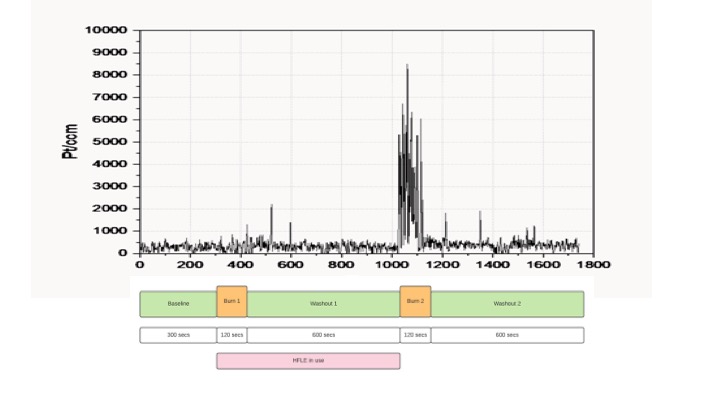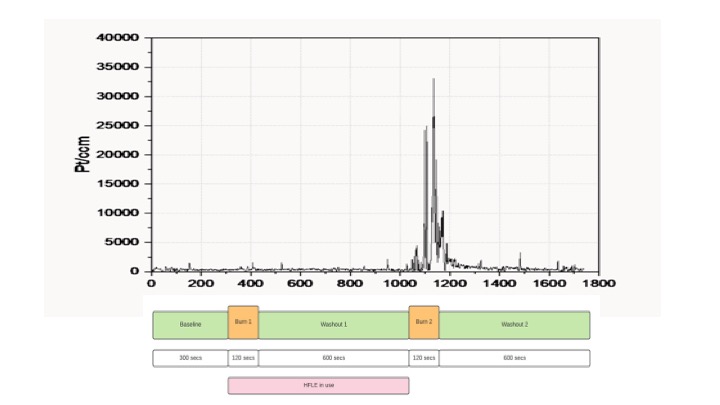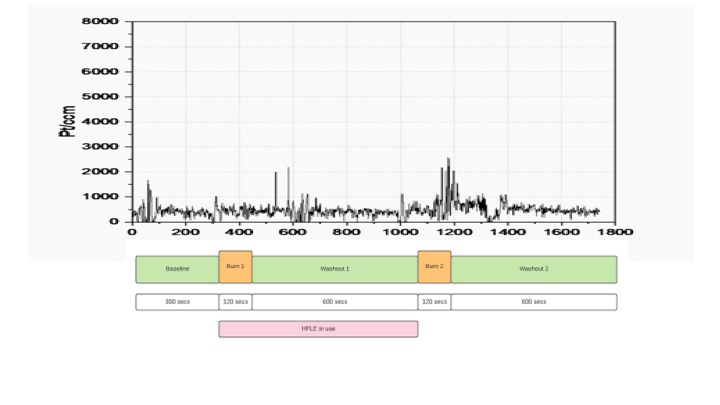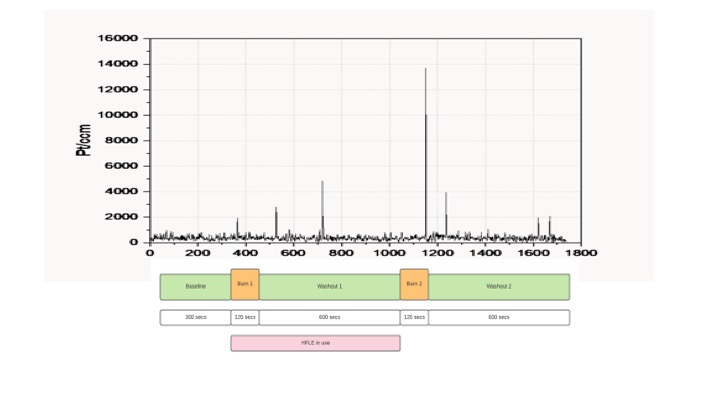Overview
Laser tests were conducted by projecting a sheet of laser light through the aerosol plume (over several respiratory cycles) and then recording high resolution video at right angles to the direction of light travel.
“Slices” were taken in sagittal and coronal planes. These slices were made through the plume in 5cm increments from the midline on both sides in the sagittal plane and in 5cm increments cephalad from the mouth in the coronal plane. Each slice was repeated both with and without High Flow Local Extraction (HFLE) in operation.
The footage below demonstrates this practice in action under normal laminar flow.
In the absence of HFLE/suction (first 3 videos) the plume can be observed to be generally pushed downwards and in a cephalad direction.
The addition of the HFLE device in the final 3 videos demonstrates zero aerosol escape with the extractor at 20cm from the lips. As the extractor is moved distally to 35 cm, small amounts of aerosol begin to escape capture at the lateral margins of the plume.
Videos of simulated aerosol illuminated with LASER in normal theatre laminar flow
See other videos on our youtube channel
Videos of simulated aerosol illuminated with LASER in altered theatre airflow with addition of extractor
See other videos on our youtube channel
Particle counts overlaid with experimental timelines
Below are particle count traces taken from different locations around the operating theatre.
Each test commenced with 5 minutes of baseline measurement (with the NIGEL breathing on standard vent settings) to establish background particle counts. This was followed by 2 minutes of continuous aerosol generation (burn time 1) with HFLE in operation. 10 minutes of observation (washout 1) with HFLE then followed with no further aerosol generation. Another 2 minutes of aerosol generation (burn time 2) followed this phase but now with the HFLE turned off. The final phase was another 10 minutes of observation (washout 2) in the absence of further aerosol generation.
No significant rises in particle counts were observed whilst the HFLE was in operation at any location measured.
Significant rises in particle counts were only observed during and following the 2nd burn, in the absence of HFLE. Counts rose as high as 30000 particles/ccm in this phase representing a 300 fold increase from baseline.
Some locations were significantly worse in terms of particle counts and predictably these were downstream of the laminar airflow.



